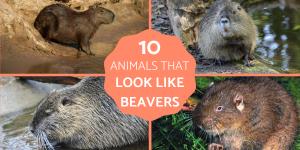Animals That Look Like Foxes


With its sleek physique, pointed ears, and bushy tail, the cunning fox is a well-known figure in folklore and around the world. These adaptable canines flourish in various environments, ranging from icy tundras to sunny deserts. Nature, in its cleverness, has created a remarkable array of creatures that share a striking resemblance to these clever predators.
In the following AnimalWised article, we'll delve into over 10 animals resembling foxes. Prepare to uncover a realm of furry look-alikes, each with distinct adaptations and ecological significance.
- Akita Inu
- Shiba Inu
- Pomsky
- Finnish Spitz (Canis lupus familiaris)
- Maned wolf (Chrysocyon brachyurus)
- Golden Jackal (Canis aureus)
- Coyote (Canis latrans)
- African wild dog (Lycaon pictus)
- Ethiopian wolf (Canis simensis)
- Asian wild dog (Cuon alpinus)
Akita Inu
The Akita Inu, a Japanese breed with increasing global popularity, is known for its symbolic representation of prosperity and loyalty. Historically, these dogs were bred for various purposes, including hunting large game such as deer, wild boar, and even bears. Over time, they also became valued as loyal companions and guardians. The story of Hachiko, an Akita memorialized for its unwavering loyalty, exemplifies these traits.
These dogs have a fox-like appearance and come in various coat colors. They typically weigh between 70 to 130 pounds (32 to 59 kilograms) and stand 24 to 28 inches (61 to 71 centimeters) tall, with broad heads and short ears.
Akitas are adaptable and intelligent, making them suitable as family pets or working companions. Their distinct characteristics make a lasting impression on those who interact with them.
For a closer look at Akitas breeds, read this other article that dives into the topic.
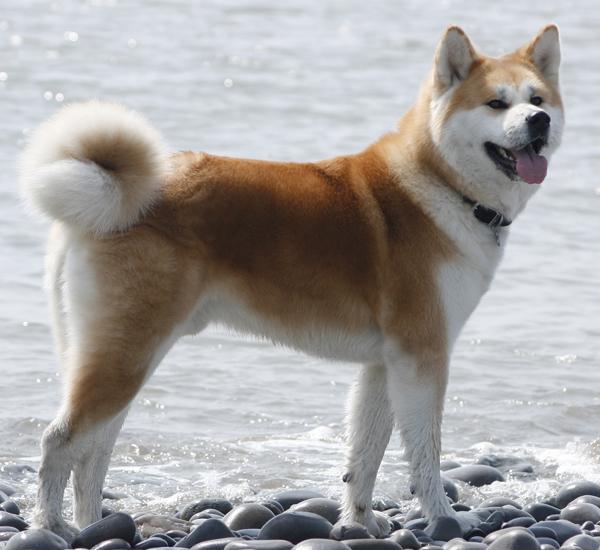
Shiba Inu
The Shiba Inu, another popular Japanese breed, shares a resemblance with foxes. While its exact origin is debated (possibly Korea or South China), it's an ancient Spitz-type breed with depictions found in ruins dating back to 500 AD.
Smaller than the Akita Inu, the Shiba Inu exhibits a compact build, typically weighing between 17 to 23 pounds (7.7 to 10.4 kilograms) and standing 13.5 to 16.5 inches (34 to 42 centimeters) tall. One of its most notable features is its distinctive, slender fox-like nose, which adds to its resemblance to its vulpine counterpart.
Shiba Inus are known for their spirited and independent personalities. Despite their small size, they possess a confident and assertive demeanor. They are often described as aloof or reserved around strangers but form strong bonds with their families.
Thinking about an Akita Inu? Unsure how they differ from Shiba Inus? This other article explores the key distinctions between these popular Japanese breeds.
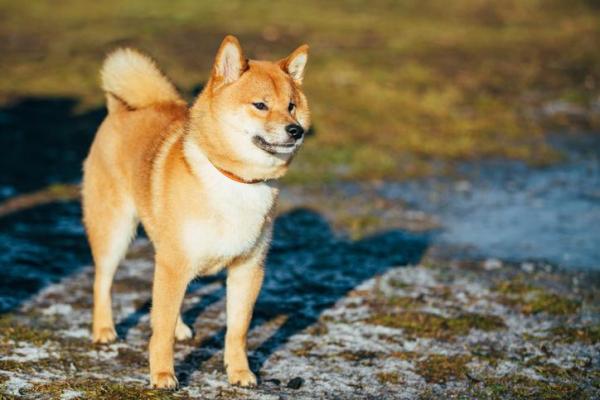
Pomsky
The Pomsky is a mixed breed dog resulting from breeding a Pomeranian and a Siberian Husky. While there's no documented "first" Pomsky litter, most sources place their emergence around 2009 in the United States. The early 2010s saw a rise in their popularity.
Since Pomeranians are significantly smaller than Siberian Huskies, artificial insemination is often used to avoid birthing complications for the mother. These compact dogs typically weigh between 10-30 pounds (4.5-13.6 kilograms) and stand 10-15 inches (25-38 centimeters) tall.
Pomskies can have coat colors that closely resemble those of foxes, including red, sable, or a combination of white and tan. This coloration contributes to their fox-like appearance.
Known for their intelligence and playful personalities, Pomskies require regular exercise due to their high energy levels.
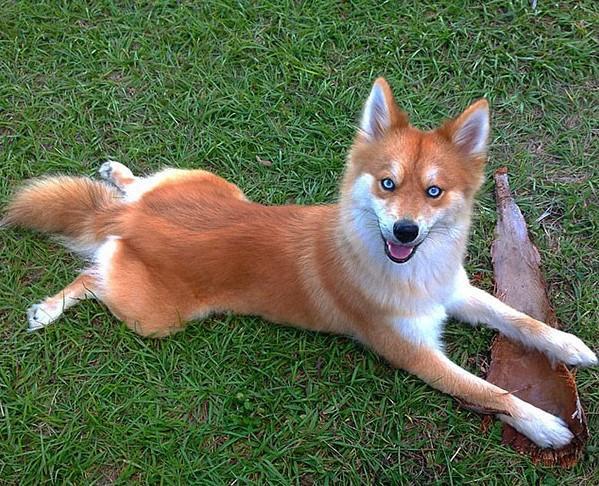
Finnish Spitz (Canis lupus familiaris)
The Finnish Spitz is an ancient hunting dog originating in Finland. Its origins stretch back thousands of years, with estimates placing their development around 3,000 years ago.
It's believed that migrants from central Russia brought spitz-type dogs with them when they arrived in what is now Finland. These early Spitz ancestors likely played a crucial role in hunting for these small communities.
The Finnish Spitz boasts a muscular and well-proportioned body, which despite its compact size, exhibits strength and agility, making it ideal for hunting. Specifically, Finnish Spitz typically measure around 15.5 to 20 inches (39 to 51 centimeters) at the shoulder, with lengths ranging from 17.5 to 20 inches (44 to 51 centimeters) from nose to tail. They typically weigh between 31 to 35 pounds (14 to 16 kilograms), showcasing a sturdy build suited for their hunting role.
One of the defining features of the Finnish Spitz is its short, erect ears. These ears stand alert, contributing to its fox-like appearance and enhancing its ability to detect sounds while hunting. Hoever, perhaps the most striking similarity to a fox is the Finnish Spitz's vibrant orange coat.
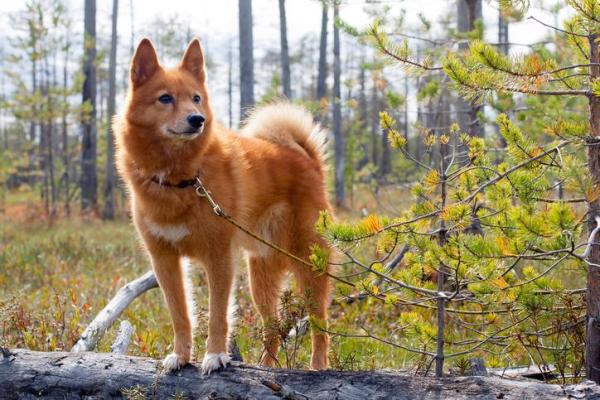
Maned wolf (Chrysocyon brachyurus)
The maned wolf (Chrysocyon brachyurus) is a unique canid native to South America and it is found in countries like Brazil, Paraguay, Argentina, Bolivia, and Peru.
One of the most noticeable features of the maned wolf is its long, slender legs, which are disproportionately long compared to its body size. This elongated limb structure is reminiscent of a fox's build, and from nose to tail, these lanky canids measure approximately 4 to 5 feet (1.2 to 1.5 meters) in length. Adult maned wolves typically weigh between 44 and 51 pounds (20 to 23 kilograms), although some individuals may weigh up to 60 pounds (27 kilograms).
While not as bushy as that of some fox species, the maned wolf's tail is relatively long and furry, adding to its fox-like appearance when viewed from a distance. Furthermore, this long-legged predator boasts a reddish-brown coat and a distinctive black mane that extends along its back and neck.
Despite its canid classification, the maned wolf is actually an omnivore. Its diet primarily consists of fruits, roots, and vegetation, but it also supplements its meals with small prey like rodents, birds, and reptiles.

Golden Jackal (Canis aureus)
The common jackal, also known as the golden jackal, hails from regions across Europe, Russia, and Asia. This adaptable creature bears a striking resemblance to the fox, with its slender build, pointed ears, thin nose, and fluffy tail. Its brown-toned fur further accentuates this fox-like appearance.
Standing around 16 to 20 inches (40 to 50 centimeters) tall at the shoulder and measuring 28 to 38 inches (70 to 95 centimeters) from nose to tail, the jackal boasts a compact yet agile build. This, combined with their weight of 15 to 35 pounds (7 to 16 kilograms), makes them adept hunters of small prey like rabbits and rodents.
Originating from ancient canid ancestors, golden jackals have existed for thousands of years, evolving to thrive in a range of environments. While they may scavenge occasionally, jackals primarily rely on their hunting skills to thrive in their diverse habitats.
Golden jackals are intelligent and resourceful animals. They exhibit social behaviors, often forming family groups or pairs for hunting and raising offspring. While they can be elusive and wary of humans, they may also adapt to human-modified landscapes, scavenging around human settlements for food.
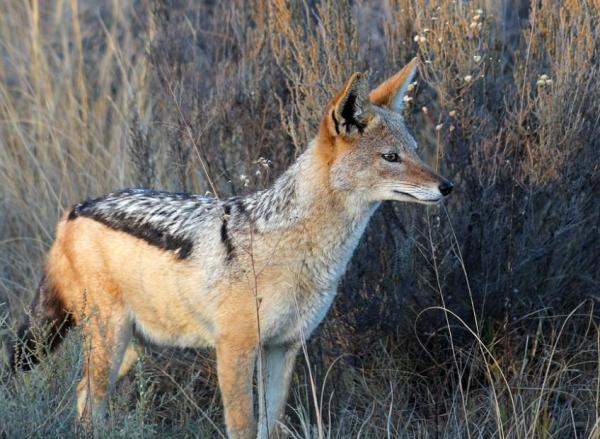
Coyote (Canis latrans)
Native to North, Central, and parts of South America, the coyote (literally meaning "barking dog") bears a striking resemblance to its smaller cousin, the fox. Its fur ranges from a cinnamon hue to reddish tones. Elongated ears and a thin nose further solidify the fox-like impression.
Standing around 20-22 inches (50-56 cm) tall and measuring 32-37 inches (81-94 cm) long, the coyote possesses a sleek and agile build, perfectly adapted for its hunting and scavenging lifestyle. While adaptable eaters, coyotes often target smaller prey or scavenge for food, demonstrating resourcefulness in diverse habitats.
Coyotes are known for their wide range of vocalizations, including howls, barks, yips, and yelps. These vocalizations serve various purposes, such as communication within their social groups, establishing territory boundaries, and signaling alarm or distress.
See resemblances to other animals with our guide to dogs that look like bears.
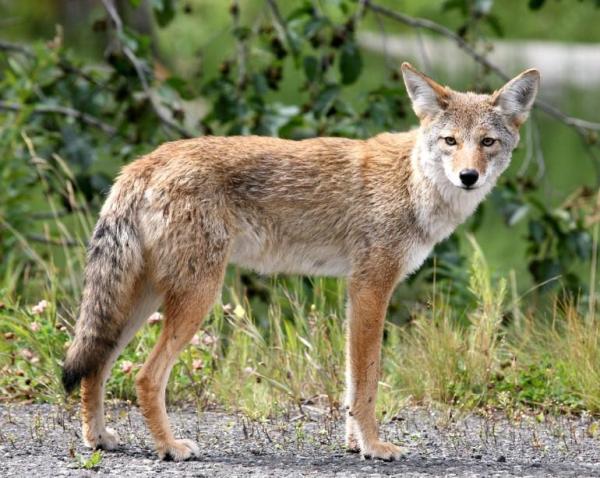
African wild dog (Lycaon pictus)
Also known as the African wild dog or Cape hunting dog, the painted wolf stands out for its resemblance to foxes. Endemic to Africa, this unique canine possesses distinct physical characteristics.
With rounded ears, a fine nose, and a slender body, the painted wolf embodies traits reminiscent of foxes. Standing around 24 to 30 inches (61 to 76 centimeters) tall at the shoulder and measuring 30 to 40 inches (76 to 102 centimeters) long, these wild dogs boast a sleek and agile build. This build, coupled with their skilled hunting tactics, makes them formidable predators.
Painted wolves are highly social animals, living in close-knit packs led by an alpha breeding pair. These packs can consist of anywhere from 2 to 27 individuals, with each member playing a specific role in the pack's activities.
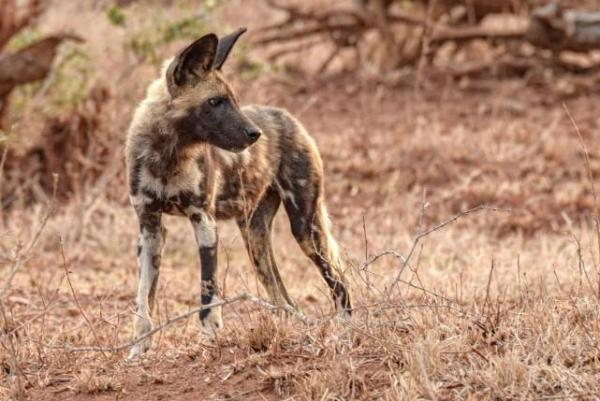
Ethiopian wolf (Canis simensis)
The Ethiopian wolf, also known as the Semién jackal or caberú, shares similarities with foxes and dingoes, making it a unique component of its ecosystem in the Ethiopian highlands. This slender canid plays a vital role in maintaining the balance of its mountainous habitats by regulating local prey populations.
With its reddish fur coat and predominantly black tail, the Ethiopian wolf stands out against the high-altitude landscapes. Long ears, a prominent nose, and elongated legs add to its fox-like appearance. Typically measuring around 20 to 24 inches (51 to 61 centimeters) at the shoulder and 35 to 45 inches (89 to 114 centimeters) from nose to tail, they weigh between 24 to 45 pounds (11 to 20 kilograms).
Unfortunately, the Ethiopian wolf faces a grim reality, with less than 600 individuals remaining in the wild, making it one of the most endangered canid species globally.
Not all dog breeds look like other animals, but it should be no surprise they often resemble other canids. See for yourself with our guide to dogs that look like wolves.
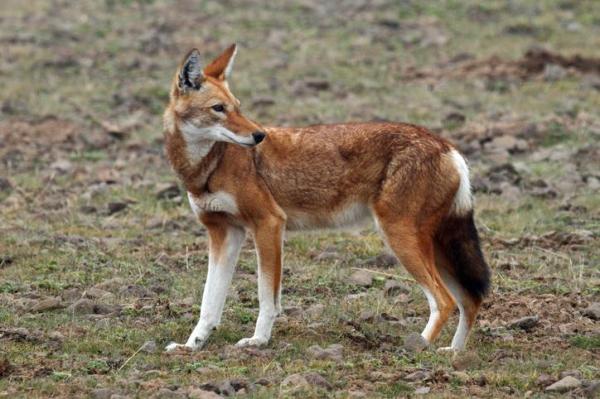
Asian wild dog (Cuon alpinus)
The Asian wild dog, also known as the dhole, bears some resemblance to other canids but possesses its own distinct characteristics. The dhole has a long history in South and Southeast Asia, with fossil records suggesting its presence in the region for thousands of years. It is believed to have evolved as a distinct species in response to the unique ecological conditions of its habitat.
With a reddish coat, lean build, and agile physique, they stand around 17 to 22 inches (43 to 56 centimeters) tall at the shoulder and measure 35 to 45 inches (89 to 114 centimeters) in length. Weighing between 15 to 44 pounds (7 to 20 kilograms).
Within these packs, there is a strong social hierarchy, with dominant individuals often leading hunts and breeding activities. Cooperative hunting is a key aspect of dhole behavior, with pack members working together to take down prey much larger than themselves.
Dive deeper into the world of Asian dog breeds! This article explores the unique characteristics of other native breeds you might love.
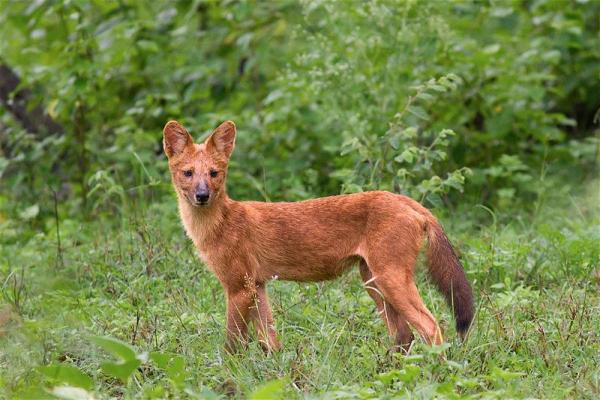
If you want to read similar articles to Animals That Look Like Foxes, we recommend you visit our Facts about the animal kingdom category.

